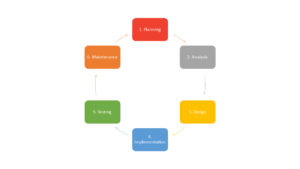Sometimes we find ourselves in the need of handling various types of objects (or entities) while using Entity Framework as ORM for our projects. The situation can be a bit more struggling when the project is not big enough to justify the use of a Repository Pattern but it’s big enough to cause lots of “noise” in the code when trying to handle basic CRUDs for each entity type.
So I came up with a solution that can handle the basic CRUDs you need within the same class:
public class Repository
{
private readonly ApplicationDbContext _context;
public Repository()
{
_context = new ApplicationDbContext();
}
public IList<T> GetEntities<T>() where T : ContextEntity
{
return _context.Set<T>().ToList();
}
public T GetEntity<T>(int id) where T : ContextEntity
{
return _context.Set<T>().Find(id);
}
public bool DeleteEntity<T>(int id) where T : ContextEntity
{
var entity = _context.Set<T>().FirstOrDefault(p => p.Id == id);
if (entity == null) return false;
_context.Set<T>().Remove(entity);
_context.SaveChanges();
return true;
}
private void AddEntity<T>(T entity) where T : ContextEntity
{
_context.Set<T>().Add(entity);
_context.SaveChanges();
}
private void UpdateEntity<T>(T entity) where T : ContextEntity
{
_context.Entry(entity).CurrentValues.SetValues(entity);
_context.SaveChanges();
}
public void SaveEntity<T>(T entity) where T : ContextEntity
{
var oldEntity = _context.Set<T>().Find(entity.Id);
if (oldEntity == null)
{
AddEntity(entity);
}
else
{
UpdateEntity(entity);
}
}
}ApplicationDbContext is the class implementing DbContext from EF. T will be class type you defined for the DbSet. For example:
public DbSet<Car> Cars { get; set; }
public DbSet<Truck> Trucks { get; set; }In this example, Car and Truck must extend the base class ContextEntity which will contain an Id property:
public class ContextEntity
{
public int Id { get; set; }
}Like this:
public class Car : ContextEntity
{
public int Year { get; set; }
public float Speed { get; set; }
public string Engine { get; set; }
}This way you can have only 1 class handling basic Get, GetAll, Save, Delete, etc…, operations for all your EF entities. Things get complicated when you have foreign keys and need to do complex query. But we’ll find out how to handle this kind of situation in the next article. Enjoy!


